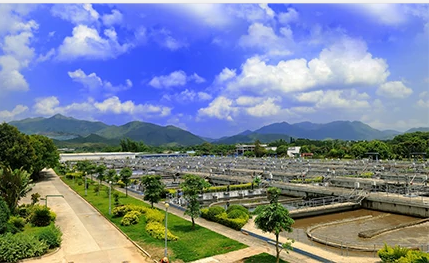 Drying Technology
Drying Technology
Keywords: sludgedryerfactory、sludgedryingequipment
Sludge is the sediment generated from wastewater treatment, including solid particles, such as sludge, sand, fiber, animal and plant residues and their solidified sheets, various colloids, adsorbed organic substances and metal elements, microorganisms, bacteria, insect eggs, weed seeds and other solids embedded in wastewater. The sewage sludge of urban sewage treatment plant is mainly composed of organic substances. Whether it can be used in a large scale depends on the characteristics of the sludge, such as its chemical composition, treatment and disposal, such as dehydration, digestion, drying and incineration. Sludge characteristics are also related to drainage system, living habits, natural climate and treatment process. In order to determine the appropriate sludge treatment process, it is necessary to understand the current sludge composition and predict the future sludge composition to achieve better treatment effect.

In sewage sludge incineration, the drier the sludge is, the less water it contains, and the more suitable it is for incineration. Due to the different water content of sludge, different incinerators should be used. For example, when dealing with completely dry powdery sludge and granular sludge with certain water content, different incinerators with different furnace convection parts and loading equipment should be used. Therefore, how to dry sludge and determine its water content to minimize energy consumption has become increasingly important. The analysis of different schemes shows that it is more economical and safer to dry the sludge until the moisture content is less than 50% before incineration. The energy required to dry the sludge to 50% moisture is much lower than that required to dry the sludge to 10% moisture. Granular sludge will not suspend
Float in the air, which reduces the possibility of dust explosion, thus greatly increasing safety.
The concentrated sludge is sent to the dehydration and drying system by the feed pump, and the flocculant is added. The filtrate is discharged through the filter medium under the pressure of the pump to complete the separation of liquid phase and solid phase. At the initial stage of feeding, the filter cake layer on the filter cloth is very thin and the filtering resistance is very low. As the filtration proceeds, the filter cake gradually thickens, and the porosity of the filter cake decreases, leading to an increase in filtering resistance and a corresponding decrease in the feeding speed. When the material fills the filter chamber, the feeding speed stops. In the filter cake compaction stage, the high-pressure water in the membrane plate generates a compressive force, which compresses the filter cake, breaks the "arch bridge" formed between the material particles, and compresses the filtrate left between the particle cavities. The capillary water in the filter cake is further discharged by the airflow blown by the strong compressed air. Replace the filter cake to further discharge the airflow blown by the strong compressed air, so as to achieve the maximum reduction of water in the filter cake. To achieve the maximum reduction of cake moisture. On this basis, the vacuum drying function is added to the low-temperature vacuum dehydration and drying technology. After the membrane filter press, the hot water heats the filter cake in the chamber through the heating plate and membrane plate, and opens the vacuum pump to evacuate the chamber, forming a vacuum inside to reduce the boiling point of water. Then, the water in the filter cake is boiled and evaporated, the mixture of steam and water extracted by the vacuum pump passes through the condenser, the steam and water are separated, the liquid water is discharged regularly, and the waste gas is purified and discharged.